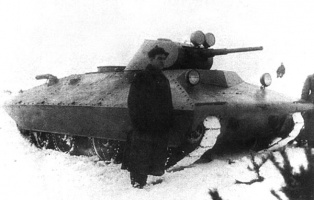Kingdom of Verendes
Flag:

Flag:

Type of Government:
While technically a hereditary monarchy Verendes has effectively been under the control of the noble parliament for the last eighty years. Represented by their respective heads each of the forty seven noble families all have the ability to propose legislature and debate it, with most issues being settled by a majority vote. While laws and government acts must be signed by the monarch in almost all circumstances the reigning head of state is powerless given the noble parliaments ability to vote no confidence and remove them from power entirely. That said, the monarch is still the face of the nation and often holds considerable respect and influence within the noble parliament itself.
One notable exception to this is in times of war, wherein the monarch is placed in direct command of the armed forces and becomes able to enact changes far more rapidly than what the parliament would have been capable of. While many argue this policy is excessive in terms of empowering the reigning monarch it has nevertheless provided vast centralization in times of war allowing vital resources to be redistributed more easily.
Head(s) of Government:
The technical head of the government is Her Majesty Queen Sanvila the Sixth, a woman of twenty four years. The youngest of monarchs in recent history Sanvila gained power when her father, a notable proponent of increased royal control, died overseeing an arms plant without leaving any other heirs seven years ago.
Other notable individuals would include Belvon Harns, the head of his noble family and the current leader of the largest block of nobles in the parliament. A hard nosed man Belvon has long advocated expansion of the colonies and was largely responsible for the Jesah war which saw the acquisition of several oil rich northern territories.
In direct opposition to Belvon stands Kenst Terou, a more idealistic family head who continues to advocate isolationism from the world and economic reform. A smaller black of nobles is in alignment with Kenst, though many highly influential families can be counted among them.
Economy:
The Verenden economy operates off a gold standard, wherein the nation must maintain a supply of gold equivalent to the amount of paper currency issued. Under this system paper currency represents a technical debt owed by the government to the individual, and this debt may be traded for goods and services. Exempt from this are silver and copper coins which hold 'true' value based upon the materials in them. Thus a one dollar note represents an equivalent amount of gold, and a half dollar of silver is silver worth a half dollar. The mint and gold reserve is commanded by the specifically appointed National Treasury which acts to control inflation and recession and is generally tasked to intervene in the economy when such action becomes necessary.
The Verenden economy however is mostly unregulated beyond the simple controls of the National Treasury and operates closely to what could be considered laissez faire. In this system manufacturing, particularly in the maritime sector, has taken an enormous role and heavy industry has become the staple of Verendes with mines and factories dominating the skyline. That said, agriculture has not been neglected entirely and enough is produced to limit the hassle of importing food though at times it has become necessary. Most oil is sourced from the many colonies of Verendes for domestic use though in times of surplus it is often sold.
Taxes are set to a flat rate, greatly favouring the rich over the poor and as a result the working poor fill the streets or find refuge in the large housing facilities many companies provide after complaints about the homeless problem began to surface.
While technically a hereditary monarchy Verendes has effectively been under the control of the noble parliament for the last eighty years. Represented by their respective heads each of the forty seven noble families all have the ability to propose legislature and debate it, with most issues being settled by a majority vote. While laws and government acts must be signed by the monarch in almost all circumstances the reigning head of state is powerless given the noble parliaments ability to vote no confidence and remove them from power entirely. That said, the monarch is still the face of the nation and often holds considerable respect and influence within the noble parliament itself.
One notable exception to this is in times of war, wherein the monarch is placed in direct command of the armed forces and becomes able to enact changes far more rapidly than what the parliament would have been capable of. While many argue this policy is excessive in terms of empowering the reigning monarch it has nevertheless provided vast centralization in times of war allowing vital resources to be redistributed more easily.
Head(s) of Government:
The technical head of the government is Her Majesty Queen Sanvila the Sixth, a woman of twenty four years. The youngest of monarchs in recent history Sanvila gained power when her father, a notable proponent of increased royal control, died overseeing an arms plant without leaving any other heirs seven years ago.
Other notable individuals would include Belvon Harns, the head of his noble family and the current leader of the largest block of nobles in the parliament. A hard nosed man Belvon has long advocated expansion of the colonies and was largely responsible for the Jesah war which saw the acquisition of several oil rich northern territories.
In direct opposition to Belvon stands Kenst Terou, a more idealistic family head who continues to advocate isolationism from the world and economic reform. A smaller black of nobles is in alignment with Kenst, though many highly influential families can be counted among them.
Economy:
The Verenden economy operates off a gold standard, wherein the nation must maintain a supply of gold equivalent to the amount of paper currency issued. Under this system paper currency represents a technical debt owed by the government to the individual, and this debt may be traded for goods and services. Exempt from this are silver and copper coins which hold 'true' value based upon the materials in them. Thus a one dollar note represents an equivalent amount of gold, and a half dollar of silver is silver worth a half dollar. The mint and gold reserve is commanded by the specifically appointed National Treasury which acts to control inflation and recession and is generally tasked to intervene in the economy when such action becomes necessary.
The Verenden economy however is mostly unregulated beyond the simple controls of the National Treasury and operates closely to what could be considered laissez faire. In this system manufacturing, particularly in the maritime sector, has taken an enormous role and heavy industry has become the staple of Verendes with mines and factories dominating the skyline. That said, agriculture has not been neglected entirely and enough is produced to limit the hassle of importing food though at times it has become necessary. Most oil is sourced from the many colonies of Verendes for domestic use though in times of surplus it is often sold.
Taxes are set to a flat rate, greatly favouring the rich over the poor and as a result the working poor fill the streets or find refuge in the large housing facilities many companies provide after complaints about the homeless problem began to surface.
Primary Species:
Human beings make up nearly the entirety of the Verenden population with white skin and black hair being the predominate traits of the population. Notable shorter than most other humans Verenden men stand at a high of 5'10 with women usually making 5'6.
Population:
~47,567,820 As of last national count.
Culture:
Verenden culture can usually be divided into two sectors, that of the working and that of the established elite. The working often value community and place enormous emphasis on family usually forming large multi family communal groups in the belief that separation causes a weakening of the spirit. Nevertheless while community and family is valued change is considered absolutely paramount, stagnation is seen as the nearest thing to death and thus many of the working class try to reinvent themselves in whatever little ways they can afford. This has evolved into a sort of sub class system, where various members of the working class differentiate themselves through trinkets and clothing, with the more flamboyant being held in higher regard. This sense of competition has long caused minor conflicts as communities of different means clash.
Regardless of minor conflicts the sense of appearing being related to means has fostered an enormous sense of cleanliness among even the poorest citizens, resulting in new industries forming around bodily care and perhaps inevitably medicine.
The primary difference between the established elite and the working class is that rather than as a means to show status opulent clothing and ostentatious appearances are merely the norm. This results in the noble and rich classes generally being far more cohesive than than those below them and as such having far less value in family as opposed to solidarity as a tier of society. Still, one element spawning from family solidarity is true for both sides of the coin, there is little gender discrimination. It is not uncommon for women to lead families, nor is it rare for them to serve in any role traditionally reserved for men. In tight groups specific distinctions between gender become less important, and this has been the case in Verendes regardless of class. On the flip side, non humans are generally looked down upon, though those closer to Humans are seen with less disdain than more atheistically disparate species.
Religious and Other Beliefs:
Verendes still holds a highly polytheistic system of religion with an ever expanding pantheon of gods whose values rarely align. Depending on the community the god of choice could be entirely separate, with many miners holding the god of the Earth in high esteem while others in the factories might hold the god of industry above all else. This system may seem divisive, but it rarely causes issue as the highest god in the pantheon, the god of time, is largely respected by all equally and acts as a single thread holding the religion together.
The Verenden pantheon lacks a proper name but is generally spoken of as the Servants of Time, with the lord of history and the future having fathered all the other gods. This in part explains why the pantheon expands, the god of time merely has more children.
History:
For uncounted ages a single empire dominated the land, and in its shadow the many city states of the world trembled. In fear of this empire a loose confederation was born among the five great port cities of the east in a vain attempt to dissuade that old empire from marching upon them. Yet in spite of this confederation the fear remained, and when the old empire began to falter and the world started to reek of war that fear drove the port cities to a single conclusion.
They had to attack before whoever succeeded the failing empire did. Banding together under the name of their commonly inhabited land, Verendes, the city states made their moved some fifteen hundred years ago. Taken off guard by the sudden attack of the peaceful cities and preoccupied by the barbarians and other states gnawing at it the empire was unable to respond, and soon Verendes became an empire of its own. Out of the ashes of the old empire only two great states remained, the Vereden Empire and the Kataylabinsk Imperium. The former represented the forces that brought the greatest era of stability in history to an end, and the latter held strong as an echo of those times and that lost empire.
Ideology, religion, fate. Whatever it was these two remaining states could never reconcile their differences and not long after the old empire fell they once more moved to war, this time on each other. Centuries of fighting would solve little and it seemed to both states that nothing could be done. Yet it was stagnation that history could not abide. After a frost destroyed the Verenden Empires crops and a flood washed away its roads some seven hundred years ago the Imperim struck once more. Faced with a new player rising in the form of the Holy Moravian Empire and besieged on two sides in the face of natural disaster the Empire in the east fell, reduced to the territory it had held all those centuries ago.
In hopes of quelling the riots and staving masses in the ruined empire the Verenden king declared its dissolution, and once more the five city states came to be. For five hundred years this would be the case, each city state gorging itself upon the wealth of trade ignorant to the world passing by, until they could no longer ignore it. The Holy Moravian Empire that had once helped to ruin old Verendes collapsed, and once more it became clear the violent states that arose from its ashes would be the doom of the city states.
So they made an old ides new, and as the first hints of industry began to show themselves in the world Verendes once more became a nation. That was one hundred and eighty years past, and since them the Verenden Kingdom has crafted its own empire, bringing distant lands under its hold and projecting force wherever it could.
Human beings make up nearly the entirety of the Verenden population with white skin and black hair being the predominate traits of the population. Notable shorter than most other humans Verenden men stand at a high of 5'10 with women usually making 5'6.
Population:
~47,567,820 As of last national count.
Culture:
Verenden culture can usually be divided into two sectors, that of the working and that of the established elite. The working often value community and place enormous emphasis on family usually forming large multi family communal groups in the belief that separation causes a weakening of the spirit. Nevertheless while community and family is valued change is considered absolutely paramount, stagnation is seen as the nearest thing to death and thus many of the working class try to reinvent themselves in whatever little ways they can afford. This has evolved into a sort of sub class system, where various members of the working class differentiate themselves through trinkets and clothing, with the more flamboyant being held in higher regard. This sense of competition has long caused minor conflicts as communities of different means clash.
Regardless of minor conflicts the sense of appearing being related to means has fostered an enormous sense of cleanliness among even the poorest citizens, resulting in new industries forming around bodily care and perhaps inevitably medicine.
The primary difference between the established elite and the working class is that rather than as a means to show status opulent clothing and ostentatious appearances are merely the norm. This results in the noble and rich classes generally being far more cohesive than than those below them and as such having far less value in family as opposed to solidarity as a tier of society. Still, one element spawning from family solidarity is true for both sides of the coin, there is little gender discrimination. It is not uncommon for women to lead families, nor is it rare for them to serve in any role traditionally reserved for men. In tight groups specific distinctions between gender become less important, and this has been the case in Verendes regardless of class. On the flip side, non humans are generally looked down upon, though those closer to Humans are seen with less disdain than more atheistically disparate species.
Religious and Other Beliefs:
Verendes still holds a highly polytheistic system of religion with an ever expanding pantheon of gods whose values rarely align. Depending on the community the god of choice could be entirely separate, with many miners holding the god of the Earth in high esteem while others in the factories might hold the god of industry above all else. This system may seem divisive, but it rarely causes issue as the highest god in the pantheon, the god of time, is largely respected by all equally and acts as a single thread holding the religion together.
The Verenden pantheon lacks a proper name but is generally spoken of as the Servants of Time, with the lord of history and the future having fathered all the other gods. This in part explains why the pantheon expands, the god of time merely has more children.
History:
For uncounted ages a single empire dominated the land, and in its shadow the many city states of the world trembled. In fear of this empire a loose confederation was born among the five great port cities of the east in a vain attempt to dissuade that old empire from marching upon them. Yet in spite of this confederation the fear remained, and when the old empire began to falter and the world started to reek of war that fear drove the port cities to a single conclusion.
They had to attack before whoever succeeded the failing empire did. Banding together under the name of their commonly inhabited land, Verendes, the city states made their moved some fifteen hundred years ago. Taken off guard by the sudden attack of the peaceful cities and preoccupied by the barbarians and other states gnawing at it the empire was unable to respond, and soon Verendes became an empire of its own. Out of the ashes of the old empire only two great states remained, the Vereden Empire and the Kataylabinsk Imperium. The former represented the forces that brought the greatest era of stability in history to an end, and the latter held strong as an echo of those times and that lost empire.
Ideology, religion, fate. Whatever it was these two remaining states could never reconcile their differences and not long after the old empire fell they once more moved to war, this time on each other. Centuries of fighting would solve little and it seemed to both states that nothing could be done. Yet it was stagnation that history could not abide. After a frost destroyed the Verenden Empires crops and a flood washed away its roads some seven hundred years ago the Imperim struck once more. Faced with a new player rising in the form of the Holy Moravian Empire and besieged on two sides in the face of natural disaster the Empire in the east fell, reduced to the territory it had held all those centuries ago.
In hopes of quelling the riots and staving masses in the ruined empire the Verenden king declared its dissolution, and once more the five city states came to be. For five hundred years this would be the case, each city state gorging itself upon the wealth of trade ignorant to the world passing by, until they could no longer ignore it. The Holy Moravian Empire that had once helped to ruin old Verendes collapsed, and once more it became clear the violent states that arose from its ashes would be the doom of the city states.
So they made an old ides new, and as the first hints of industry began to show themselves in the world Verendes once more became a nation. That was one hundred and eighty years past, and since them the Verenden Kingdom has crafted its own empire, bringing distant lands under its hold and projecting force wherever it could.
Territories:

Cities, Bases, etc.:
The capital of Verendes is Destun, a sprawling city of industry left curiously smog free by the constant sea breeze given it's coastal locale. The royal palace as well as the noble parliament are situated just beyond the cities limits and the main air, navy, and army bases for the nation all located within it.
Another notable city would be Esten, a city with the distinction of being closest to the PKK border. It is for this fact the city is the home of three tank divisions and even more infantry, a force large enough to back up the forces on the border in a timely fashion should worst come to worst.
Climate:
Just north of the Equator Verendes is a warm nation that gets the occasional snowfall in it's more northern regions. Much of the nation was home to large forests in times past but now few remain, with farms taking up whatever is not covered by cities and industry. Rain is a constant of Verendes with it expected in all seasons, though with extra fog on the coast during the fall and winter.
Plant and animal life is abundant in the nation though most of what could be considered dangerous is long hunted to extinction, though in the private reserves of the nobles near the costs there is a snapshot into the vast and unrestricted amount of life that once called Verenes home.
All together, Verendes is a mild climate with a proclivity towards rain.
Agriculture:
Agriculture in Verendes is highly mechanized compared to most other nations, feeding off the manufacturing sector. This however has not lead to a massive increase in production given farmers have very little space to work with in comparison with other nations. Nevertheless Verendes rarely has to import food, though it does happen. This is usually the result of farming magnates exporting food at a favourable price and leaving the nation with a deficit, an issue which the government has been incapable of preventing due to the power and often in person representation of those responsible. Still, this competitive environment has brought about many innovations and some worry that increased regulation would cause a famine due to many of the current farmers no longer having to edge out any advantage they can and becoming complacent.
Industry:
Verendes is built upon its naval heavy industry, and nearly every city is home to as many factories as houses, a state of affairs that owes itself to the free economic decree of the king many years ago. When all those years ago the economy was formally deregulated an industrial revolution followed that changed the very fabric of the nation. What once was an agrarian people operating a hub of sea trade changed overnight into a people bent on competition and profit. The nobility were the first to exploit the situation and quickly solidified their power by buying up vast swaths of land and clearing it of forests to build the foundations for future industrial empires, but they were not alone. Many formerly middle class merchants found themselves able to buy specific sites rich in resources to feed the new factories and joined the nobles as the new elite. Of course this all came at the expense of the common man. Industry forced the throng into the streets or cramped apartments, a trend that is only becoming less pronounced now that many factory owners are building on site housing for their workforce, if only because the streets look better free of piss and shit. Nowadays industry remains king and while Verenden factories cannot match the quality of the great powers a large emphasis has been placed on quality and efficiency that few can match.
Main Imports:
Grains, Lumber, Oil, Cotton.
Main Exports:
Large engines, Textiles, Electronics, Luxury Goods, Ships, Weapons, Maritime goods.

Cities, Bases, etc.:
The capital of Verendes is Destun, a sprawling city of industry left curiously smog free by the constant sea breeze given it's coastal locale. The royal palace as well as the noble parliament are situated just beyond the cities limits and the main air, navy, and army bases for the nation all located within it.
Another notable city would be Esten, a city with the distinction of being closest to the PKK border. It is for this fact the city is the home of three tank divisions and even more infantry, a force large enough to back up the forces on the border in a timely fashion should worst come to worst.
Climate:
Just north of the Equator Verendes is a warm nation that gets the occasional snowfall in it's more northern regions. Much of the nation was home to large forests in times past but now few remain, with farms taking up whatever is not covered by cities and industry. Rain is a constant of Verendes with it expected in all seasons, though with extra fog on the coast during the fall and winter.
Plant and animal life is abundant in the nation though most of what could be considered dangerous is long hunted to extinction, though in the private reserves of the nobles near the costs there is a snapshot into the vast and unrestricted amount of life that once called Verenes home.
All together, Verendes is a mild climate with a proclivity towards rain.
Agriculture:
Agriculture in Verendes is highly mechanized compared to most other nations, feeding off the manufacturing sector. This however has not lead to a massive increase in production given farmers have very little space to work with in comparison with other nations. Nevertheless Verendes rarely has to import food, though it does happen. This is usually the result of farming magnates exporting food at a favourable price and leaving the nation with a deficit, an issue which the government has been incapable of preventing due to the power and often in person representation of those responsible. Still, this competitive environment has brought about many innovations and some worry that increased regulation would cause a famine due to many of the current farmers no longer having to edge out any advantage they can and becoming complacent.
Industry:
Verendes is built upon its naval heavy industry, and nearly every city is home to as many factories as houses, a state of affairs that owes itself to the free economic decree of the king many years ago. When all those years ago the economy was formally deregulated an industrial revolution followed that changed the very fabric of the nation. What once was an agrarian people operating a hub of sea trade changed overnight into a people bent on competition and profit. The nobility were the first to exploit the situation and quickly solidified their power by buying up vast swaths of land and clearing it of forests to build the foundations for future industrial empires, but they were not alone. Many formerly middle class merchants found themselves able to buy specific sites rich in resources to feed the new factories and joined the nobles as the new elite. Of course this all came at the expense of the common man. Industry forced the throng into the streets or cramped apartments, a trend that is only becoming less pronounced now that many factory owners are building on site housing for their workforce, if only because the streets look better free of piss and shit. Nowadays industry remains king and while Verenden factories cannot match the quality of the great powers a large emphasis has been placed on quality and efficiency that few can match.
Main Imports:
Grains, Lumber, Oil, Cotton.
Main Exports:
Large engines, Textiles, Electronics, Luxury Goods, Ships, Weapons, Maritime goods.
Recently expanded as a response to the growing communist threat the armoured forces of Verendes have quickly grown due to the nations heavy industry and are now a match in quality for even the most advanced nations, though quantity remains an issue.

The main tank of the Verenden armed forces the R-56 is a medium tank used to engage other armoured vehicles and support infantry in any number of roles. It is perhaps the most identifiable symbol of the Verendan military being utterly ubiquitous in nearly every branch.
The R-56 sports a high velocity 82mm primary gun on an electrically driver turret as well as a 50mm howitzer on the hull and a rotating cupola equipped with a 7.6mm machine gun.

Far slower than the R-56 but sporting a faster firing gun and more armour the R-12 was designed to hit enemy tank columns from concealed positions and be able to tank fire while retreating from a crippled enemy.
The R-12 is equipped with a short 75mm gun designed to pound enemy armour on the sides using it's quick reload system. A 7.6mm machine gun is also mounted for dealing with ground forces.
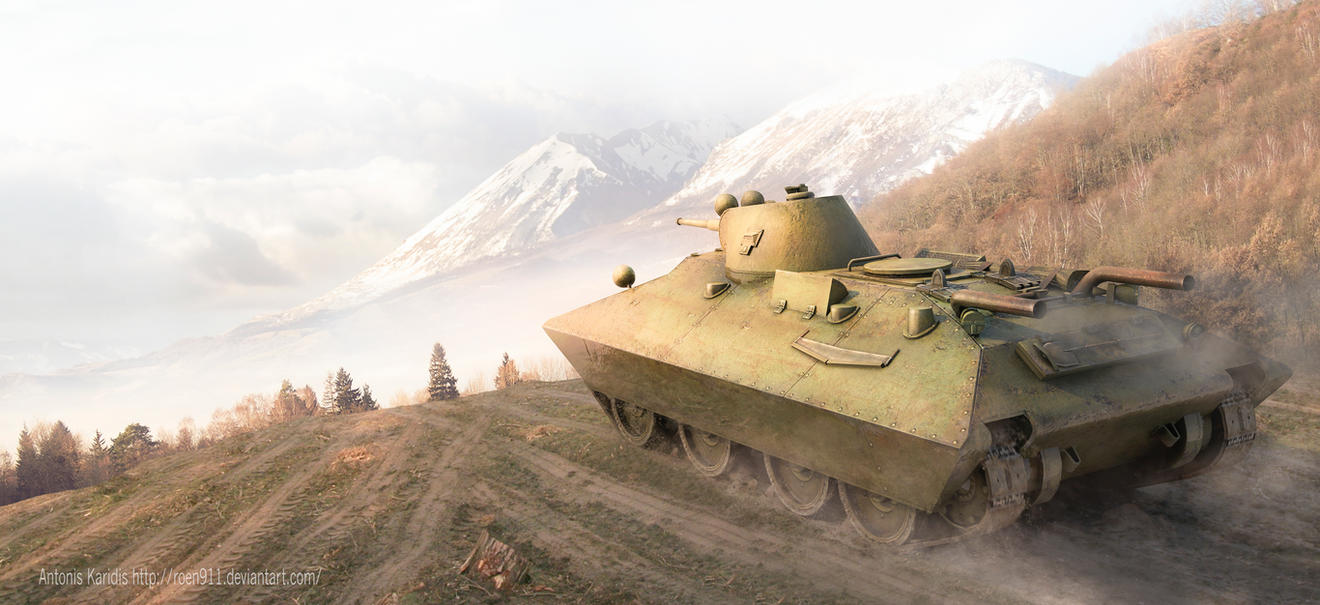
A fast and lightly armoured tank the R-55 is a mobile scout and flanking vehicle able to harass the enemy and distract them form its more dangerous allies.
The R-55 uses a 45mm gun to engage targets and a frontally mounted 7.6mm machine gun to ward off infantry attack.

A self propelled artillery piece the RA-2 is the standard gun used by the armoured forces to support its operations.

The main tank of the Verenden armed forces the R-56 is a medium tank used to engage other armoured vehicles and support infantry in any number of roles. It is perhaps the most identifiable symbol of the Verendan military being utterly ubiquitous in nearly every branch.
The R-56 sports a high velocity 82mm primary gun on an electrically driver turret as well as a 50mm howitzer on the hull and a rotating cupola equipped with a 7.6mm machine gun.

Far slower than the R-56 but sporting a faster firing gun and more armour the R-12 was designed to hit enemy tank columns from concealed positions and be able to tank fire while retreating from a crippled enemy.
The R-12 is equipped with a short 75mm gun designed to pound enemy armour on the sides using it's quick reload system. A 7.6mm machine gun is also mounted for dealing with ground forces.

A fast and lightly armoured tank the R-55 is a mobile scout and flanking vehicle able to harass the enemy and distract them form its more dangerous allies.
The R-55 uses a 45mm gun to engage targets and a frontally mounted 7.6mm machine gun to ward off infantry attack.

A self propelled artillery piece the RA-2 is the standard gun used by the armoured forces to support its operations.
The core of the Verenden military the infantry serve as the fodder and the hammer necessary to win wars. Despite this, the infantry often finds themselves neglected in favour of the more specialized branches.

The Verenden military has long espoused the benefits of automatic fire and mandates every platoon of six men have two machine guns. These men often suffer higher casualty rates but nevertheless the position never has a lack of volunteers given it represents an elevation in rank.

The core of the Verenden military riflemen are the front line soldiers in any war. Given a bolt action rifle, spare ammunition, grenades, and equipment to resist chemical weapons these soldiers are often the lowest members of society looking for an opportunity for advancement in the military.
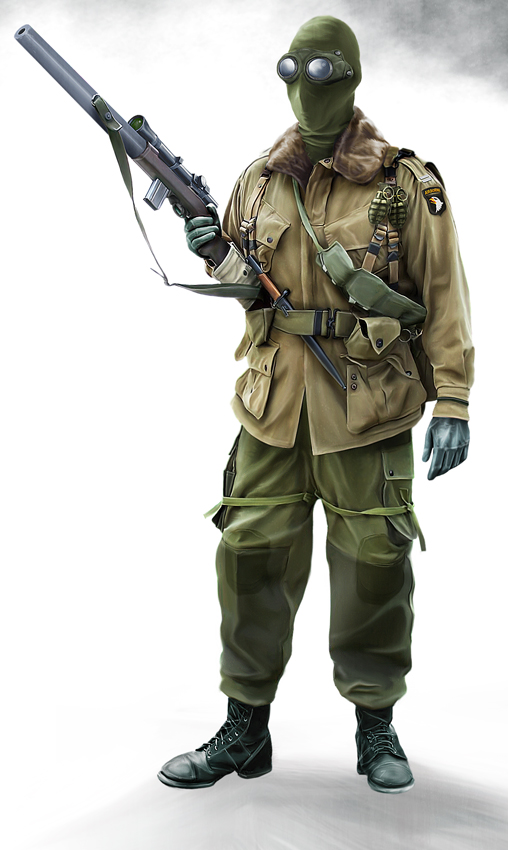
Plagued by the agents of other nations it eventually became apparent that a new division of the military was needed to counter this threat. Selected from the soldiers showing the least remorse and the most cool under combat the SI represents the elite core of the Verenden military. Little is standardized in the division and every soldier is unique, save the mask that covers all their faces.

The Verenden military has long espoused the benefits of automatic fire and mandates every platoon of six men have two machine guns. These men often suffer higher casualty rates but nevertheless the position never has a lack of volunteers given it represents an elevation in rank.

The core of the Verenden military riflemen are the front line soldiers in any war. Given a bolt action rifle, spare ammunition, grenades, and equipment to resist chemical weapons these soldiers are often the lowest members of society looking for an opportunity for advancement in the military.

Plagued by the agents of other nations it eventually became apparent that a new division of the military was needed to counter this threat. Selected from the soldiers showing the least remorse and the most cool under combat the SI represents the elite core of the Verenden military. Little is standardized in the division and every soldier is unique, save the mask that covers all their faces.
Flag of the VAF

The Verenden military has long lacked airships, largely due to the nations relative political isolation in the last hundred years. As such the air forces are a collection of attempts and experiments meant to level the playing field. In this role super props and push props have become the normal aircraft fielded by Verendes. While outmatched in firepower the airforce has always been a priority.

The primary interceptor aircraft of the Verenden military the TY-77 was designed as the antithesis to the idea that the bomber would always get through. A fast climber with a heavy armament of 30mm cannons the TY-77 is meant to climb above a bomber formation and destroy them on the way down, turrets fighting off persueing aircraft.

A snub nose and highly manoeuvrable fighter with respectable firepower the TY-76 is the main craft of the air forces and can be found deployed in all locations Verendes has stationed forces.

A nation without airships or the know how to make them Verendes relies on the TY-83 to fight off the overgrown air whales of other nations. Armed with a copious number of defensive turrets the TY-83 is loaded with large unguided rockets to be fired at large airborne targets.

A response to the advent of larger bomber airships and aircraft the TY-80 can carry a respectable bombload over a long range to cripple the production facilities of enemies.

The TY-64 is an anti shipping float plane designed to sink enemy vessels with it's two large torpedoes and speed to safety with its overcharged engine

Once the main fighter of Verendes this venerable plane is now relegated to scouting roles.

The Verenden military has long lacked airships, largely due to the nations relative political isolation in the last hundred years. As such the air forces are a collection of attempts and experiments meant to level the playing field. In this role super props and push props have become the normal aircraft fielded by Verendes. While outmatched in firepower the airforce has always been a priority.

The primary interceptor aircraft of the Verenden military the TY-77 was designed as the antithesis to the idea that the bomber would always get through. A fast climber with a heavy armament of 30mm cannons the TY-77 is meant to climb above a bomber formation and destroy them on the way down, turrets fighting off persueing aircraft.

A snub nose and highly manoeuvrable fighter with respectable firepower the TY-76 is the main craft of the air forces and can be found deployed in all locations Verendes has stationed forces.

A nation without airships or the know how to make them Verendes relies on the TY-83 to fight off the overgrown air whales of other nations. Armed with a copious number of defensive turrets the TY-83 is loaded with large unguided rockets to be fired at large airborne targets.

A response to the advent of larger bomber airships and aircraft the TY-80 can carry a respectable bombload over a long range to cripple the production facilities of enemies.

The TY-64 is an anti shipping float plane designed to sink enemy vessels with it's two large torpedoes and speed to safety with its overcharged engine

Once the main fighter of Verendes this venerable plane is now relegated to scouting roles.
A coastal nation Verendes has long held it's navy to the highest standard, and even today boasts that it can rival the forces of far larger nations. Something that seems less and less true every day in the face of the great powers of the day.

The largest ships Verendes has ever put to sea the two Retribution class battleships each sport primary three turrets of four 381 mm guns under the belief that a battle is best ended in a single large broadside. Beyond that two secondary turrets each hold three 150mm guns. An enormous investment these ships are the symbol of Verenden naval power.

Designed to protect the Verenden colonies and exert force wherever it becomes needed the Glorious class cruiser has three turrets of three 279mm guns. These vessels are battleships in all but name and make up a sizable portion of the Verenden navies tonnage.
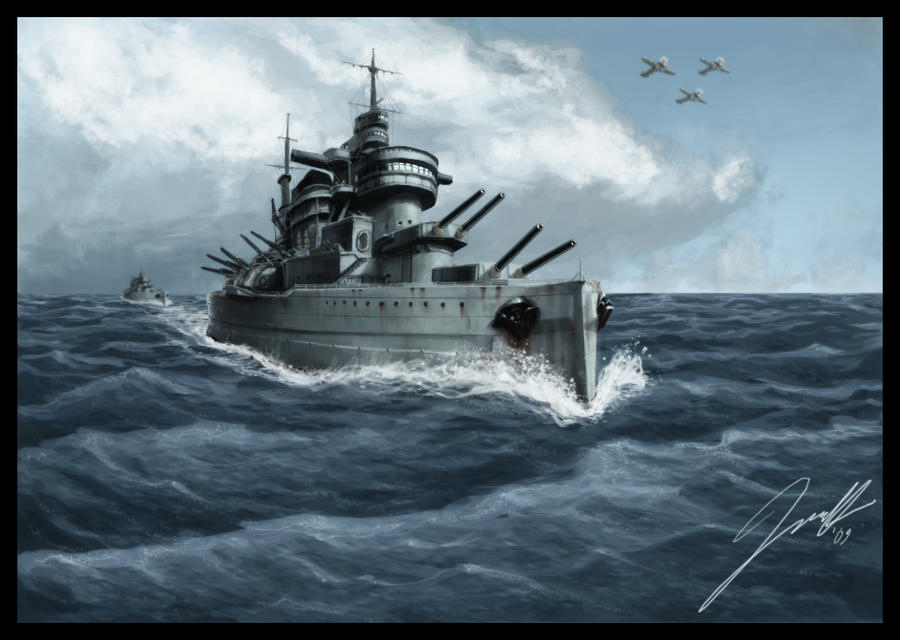
The Incursion class is a fast cruiser with big guns and a large AA/Secondary gun bank. The main guns in use 228mm and are mounted in pairs on three turrets.
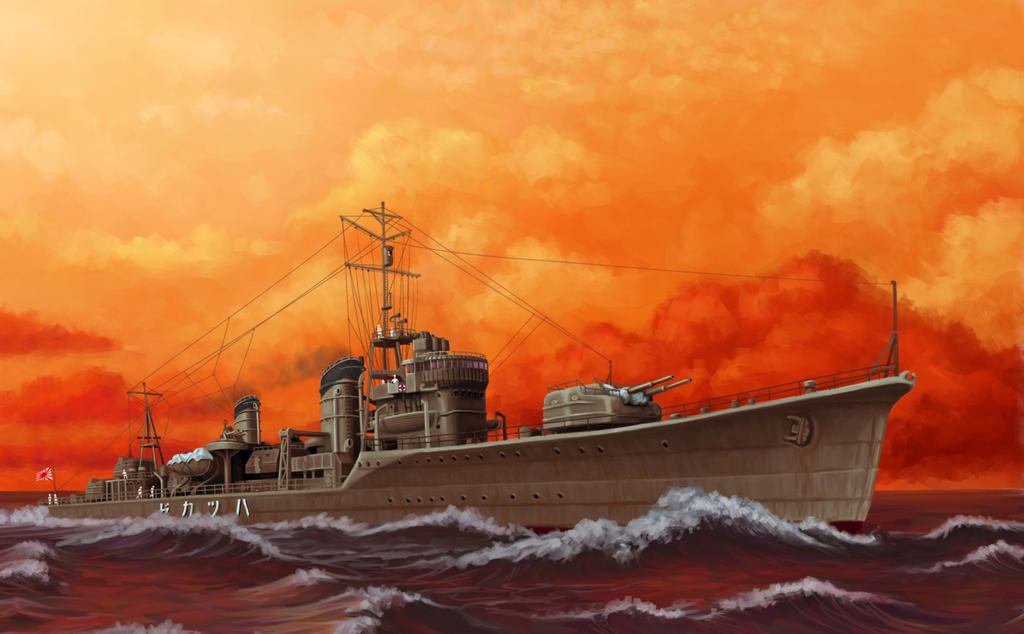
Armed with two turrets of two 100mm guns the Advantage prioritizes speed and the use of it's four tri torpedo mounts over larger guns.
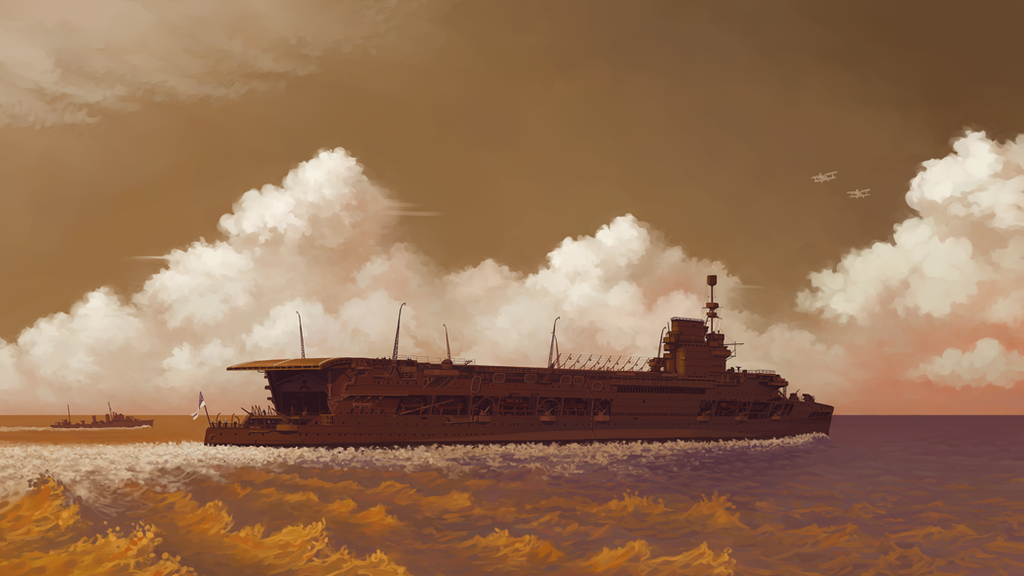
Without military airships or the desire to construct them while so far behind the rest of the world the Verenden military elected to create aircraft carriers to project the countries airpower. The Perilous class represents the latest technology possessed by Verendes.
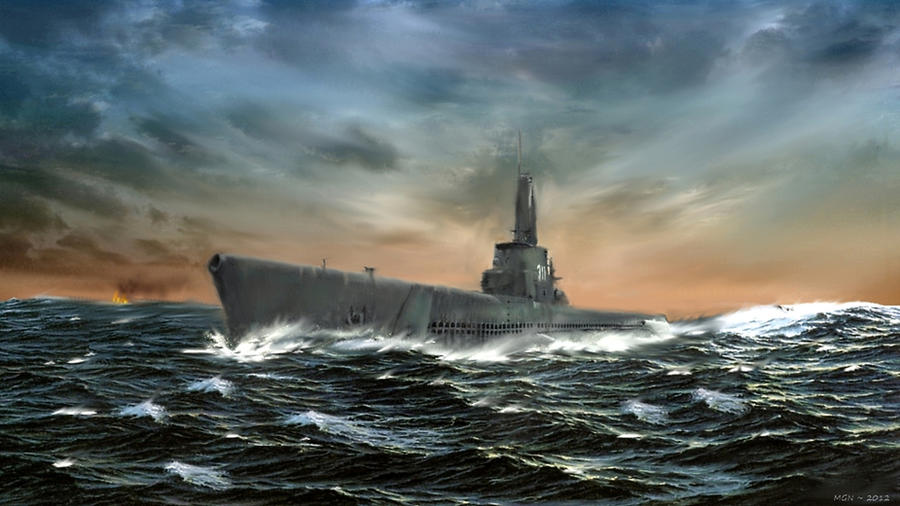
A tried and tested design the Engagement class is the main submarine in the Verenden arsenal. Specialized for hunting commerce vessels and warships these are, like any good submarine, the scourge of the sea.

The largest ships Verendes has ever put to sea the two Retribution class battleships each sport primary three turrets of four 381 mm guns under the belief that a battle is best ended in a single large broadside. Beyond that two secondary turrets each hold three 150mm guns. An enormous investment these ships are the symbol of Verenden naval power.

Designed to protect the Verenden colonies and exert force wherever it becomes needed the Glorious class cruiser has three turrets of three 279mm guns. These vessels are battleships in all but name and make up a sizable portion of the Verenden navies tonnage.

The Incursion class is a fast cruiser with big guns and a large AA/Secondary gun bank. The main guns in use 228mm and are mounted in pairs on three turrets.

Armed with two turrets of two 100mm guns the Advantage prioritizes speed and the use of it's four tri torpedo mounts over larger guns.

Without military airships or the desire to construct them while so far behind the rest of the world the Verenden military elected to create aircraft carriers to project the countries airpower. The Perilous class represents the latest technology possessed by Verendes.

A tried and tested design the Engagement class is the main submarine in the Verenden arsenal. Specialized for hunting commerce vessels and warships these are, like any good submarine, the scourge of the sea.


